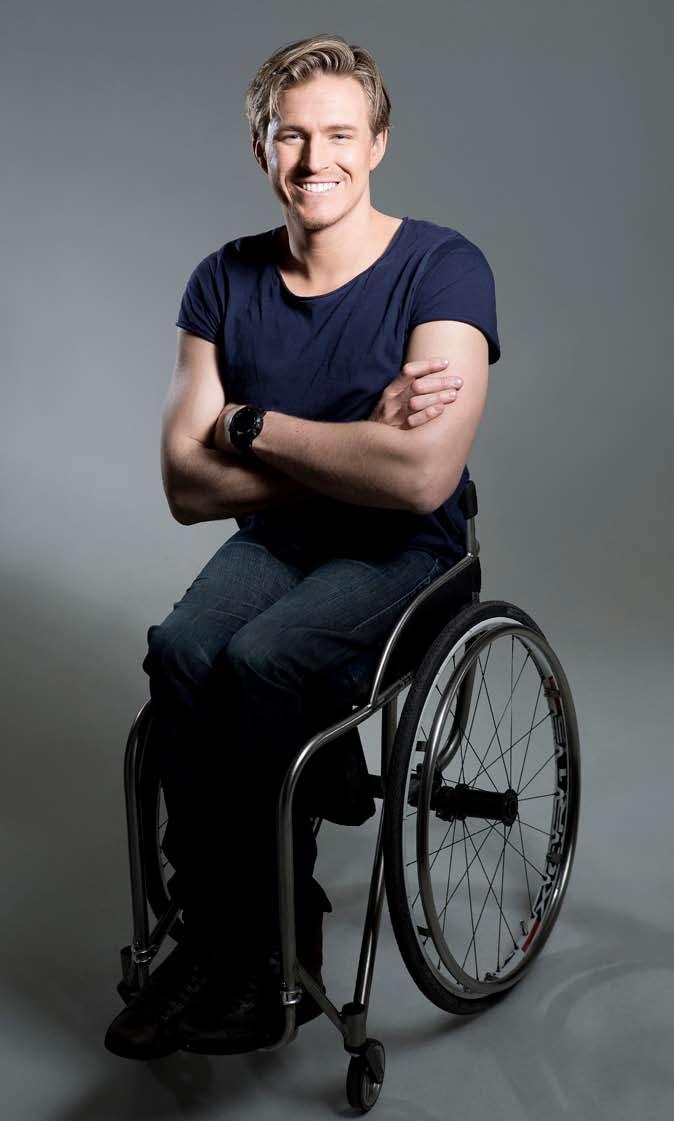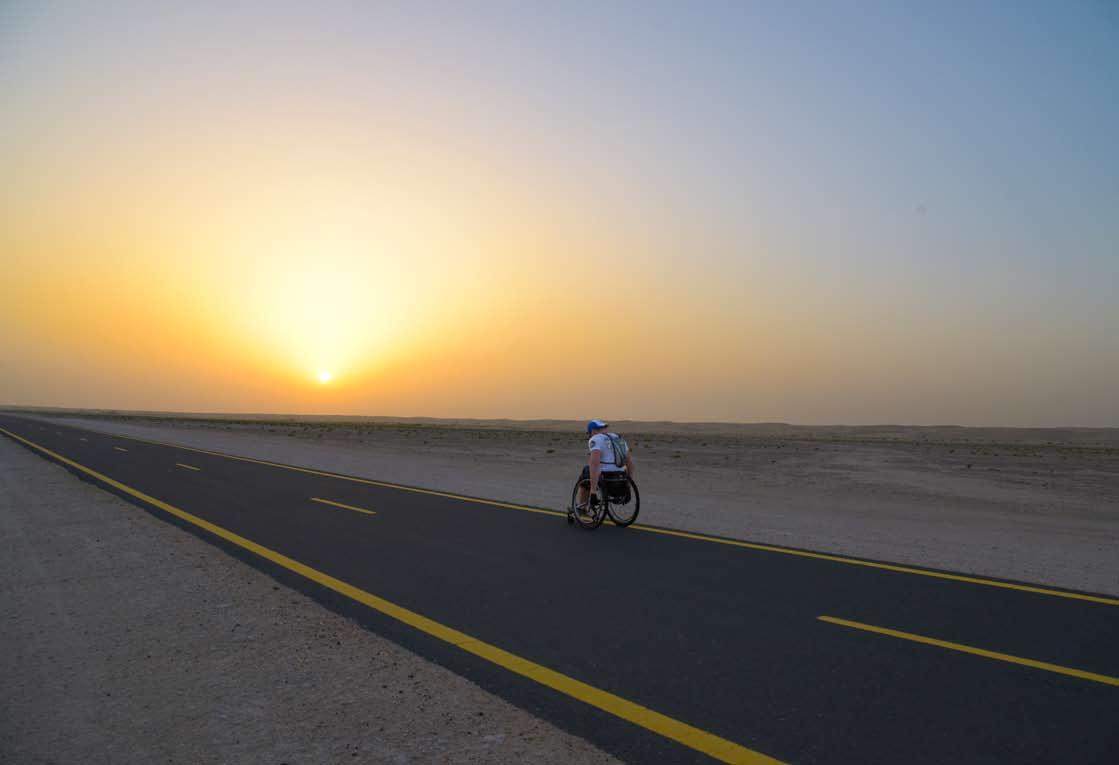
6 minute read
For patients, wearables are fantastic tools to manage health and well-being
from OSOZ World
by OSOZ Polska
On his 8th birthday, Aron Anderson received his first chemotherapy treatment against cancer located in the lower part of his spine. There was pain, suffering and tears. After the surgery, first he had to lie still in a bed for 6 weeks, then he wasn’t allowed to sit down for an entire year. He couldn’t walk anymore. After weeks in hospital came the next challenge: getting back to daily life. He has gained confidence again through sport. Self-tracking also helped him to take control of his health and to improve his physical performance. His perspective on being a patient in today’s health systems is a great lesson.
How did you become a patient? What happened?
Advertisement
When I was 7 years old I got this strange pain in my bottom from sitting down. After about two weeks of pain I had an Xray that found of tumor the size of an apple growing in my lower back. This was followed by a long year full of chemo and radiation without much success. I eventually had surgery to remove the cancer which also meant cutting a lot of nerves going to my legs so since that day I’ve been in a wheelchair.
Once you said “the healthcare system was able to cure you but didn’t make you healthy”. What do you mean by that?
The Swedish healthcare system cured my cancer. First when I had it in my lower back and also when it came back three times in my lungs. But going through chemo, radiation and surgeries isn’t really health. When I was about 20 I was training extremely hard to become the best in the world at athletics but I was sick all the time with colds; if the flu was going around I was sure to catch it and I also had some really bad acne. This led me on a path to regain my true vibrant health and not “just” to be free from cancer.
What doesn’t work well in healthcare systems? What kind of patients’ needs don’t they address?
This is a very wide question but from my point of view the health care system is excellent when it comes to curing acute conditions such as heart attacks, broken bones and cancer. What it’s lacking is helping people actually achieve great health. Studies today show that 90-95% of cancer in adults is related to lifestyle and environmental issues. I truly believe that we have to start addressing these issues and teaching people how everybody can become the healthiest version of themselves.
You were discharged from hospital, you come back home and what was your biggest fear to start „post-hospital life”? What was most challenging?
My biggest fear was wheelchairs! I have some function in my legs so in the beginning I was using a walker to move around. This made me feel “normal” since I could walk. I was incredibly
scared of ending up in a wheelchair since I was certain that would make me disabled. I was at camp when one of the instructors pretty much forced me to try her chair. That moment changed my life and truly gave me back my freedom.
When was the first time you had the idea of trying some digital health solutions? What was it exactly?
When I first tried to regain my health I was extremely confused because there was one book telling me to eat carbs, one telling me to not eat carbs and so on. Who was I to believe and what would be true for my biology?
I started testing a lot of different diets to see what would work for me, which was a really slow and painful process. In the last 6-7 years more and more digital solutions have become available and I remember measuring my heart rate variability (HVR) for the first time about 7 years ago. I did it every morning and it took about 10 minutes and I had to wear a heart rate strap. I did it for a while but eventually tired since it was too much hassle. Today I get the same value automatically in my phone when I wake up from my Oura Ring which records my HRV value when I sleep.
I’ve always believed in digital solutions to quantify my health and get real numbers. I truly like that saying “What you measure will improve” so this is my was of improving my health and fitness.
What devices / innovations are you using in your daily life? How do they help you?

I love devices and gadgets so I use quite a few different ones but my favourites are: • The Oura Ring – which is a ring (not much bigger than my wedding ring) that I wear when I sleep. The ring has a heart rate sensor and accelerometer so it tracks my night time heartrate, Heart rate variability and sleep. So every morning when I wake up I get my “readiness score” which pretty much tells me how hard I can go that day or if I need rest. • DNA-testing. I’ve used 23andme. com and DNAfit.com to analyse my DNA and I’ve found really useful things such as that I’m sensitive to carbs and that I’m slow at metabolising caffeine. This has let me to make changes such as eating a diet higher in fats and lower in carbs and restricting my coffee intake to the mornings to not affect my sleep. • The Muse2 meditation band – I’ve always wanted to meditate but been really bad at it. The Muse meditation headband helps me meditate and tells me when I’m actually doing the right thing. Which has made me calmer and more focused.
How can tools like wearables support patients? Why do you find them helpful? How do they changed your life?
Everyday I’m collecting a whole bunch of data about how my body is doing and reacting to different stressors. For us patients, I think wearables are fantastic tools to quantify how we feel and see what our numbers say when we make changes in our routine with diet, exercise and sleep. My favourite benefit I got from my wearables right now is HRV that is a great tool for tracking stress in my nervous system and seeing how well recovered my body is.
You are overcoming further challenges in your life. What is the next one?
Yes, I’ve overcome quite a few big challenges in the last few years such as Iron Man triathlons and climbing mountains. My next

big goal is to be the first paraplegic climber to reach the summit of Mt Everest.
If you could address one message to those who are responsible for health policies, what changes would you suggest?
Start thinking long term! Most healthcare systems don’t have a clear incentive to think long term, but if we don’t do this we will have a massive problem in 10, 20 or 30 years. We have to teach people to achieve health through a lifestyle that supports their genes with healthy diet, exercise and sleep. Healthcare is not about curing diseases it’s about avoiding them in the first place!”
From the author: I met Aron during the Symposium on the Future of Digital Health Systems in the European Region (Copenhagen, 68 February 2019) where he gave an inspirational speech. He’s taken on challenges that most people wouldn’t even dream of. His strong will allowed him to overcome many adversities and hard times. Wearables are only one of the tools to make patients life better but every tool matters. Visit Aron’s website: aronanderson.se/en










